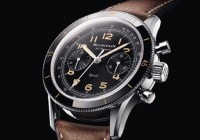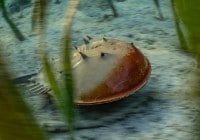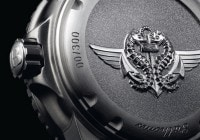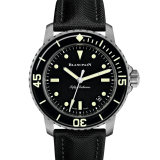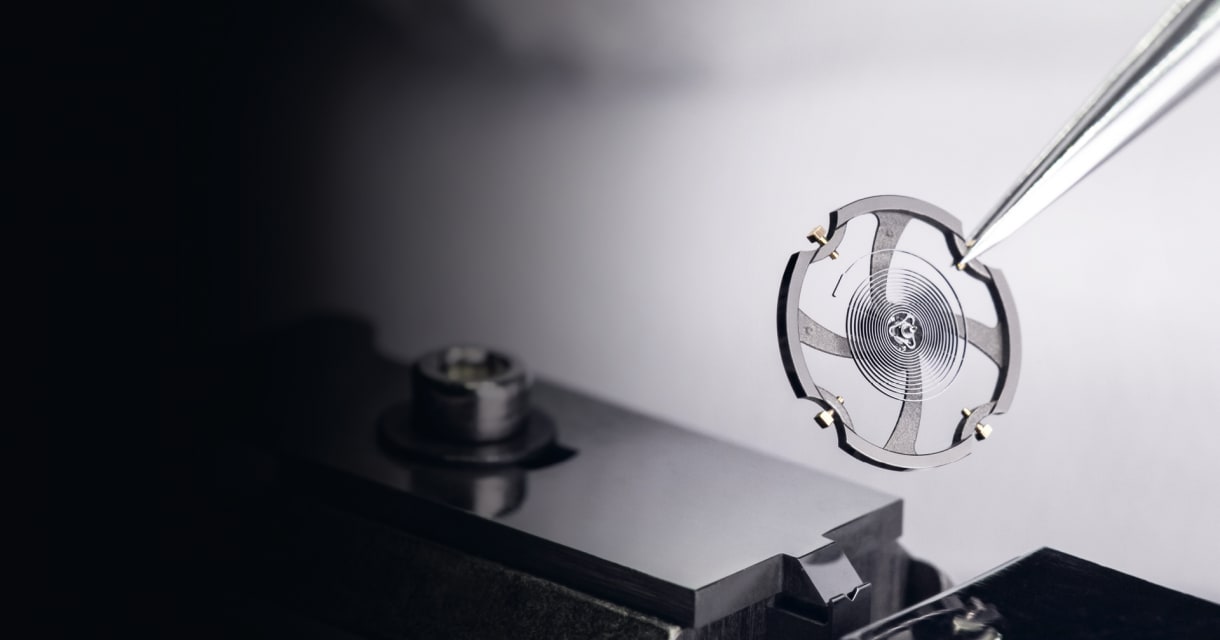
Search in Issues
Chapters
List of parts
Chapter 4
NAGEURS de combat
The Fifty Fathoms was the dive watch for militaries around the world; the French combat divers, however, were the first.
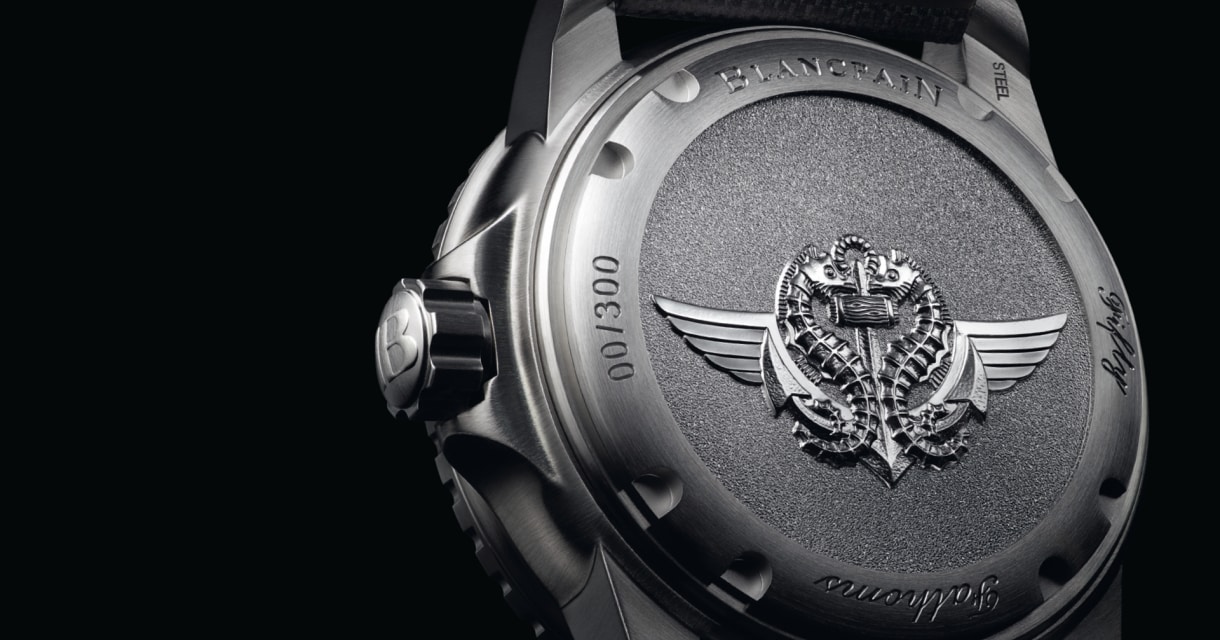

The seven-decade history of the Fifty Fathoms is studded with milestone relationships with the world’s leading militaries: the U.S. Navy, the German Bundesmarine, the Norwegian Navy, the Pakistani Navy, the Israeli Navy… But the first was the French Navy, more particularly the French Nageurs de Combat (combat divers).
At the conclusion of World War II, the French military determined that it needed to develop a modern combat diving corps. To lead the effort, it tapped Captain Robert “Bob” Maloubier and Lieutenant Claude Riffaud. Maloubier was a distinguished war hero who fought with the British Special Operations Executive, the S.O.E. This organization, a brainchild of Churchill, both itself and in collaboration with the French resistance, engaged in some of the most difficult and hazardous intelligence and sabotage operations of the war. In Churchill’s words, it was the “department of ungentlemanly warfare”. Such was Maloubier’s bravery and success with the S.O.E., that Queen Elizabeth bestowed upon him the Order of the British Empire.
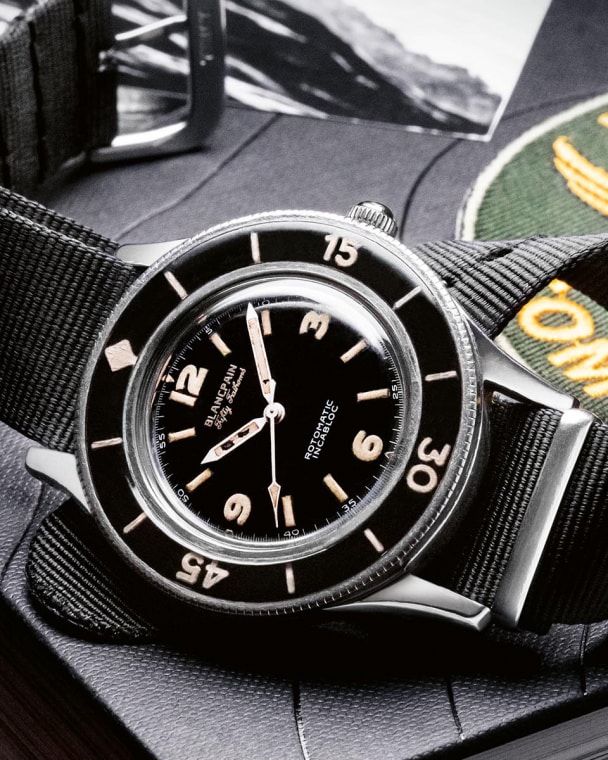
One of the first Fifty Fathoms from 1953, already featuring three Blancpain patents and all the key design elements of the modern diving watch.
With only a SINGLE ADDITION, magnetic shielding, the original Fifty Fathoms, created a year earlier, FULLY MET the SPECIFICATIONS of the French combat diving team.
Maloubier and Riffaud started from scratch to assemble the full complement of required diving material. Of course, a timing instrument occupied a key place on their list. Their first stop was with the largest French watch company at the time, LIP, based in Besançon but with offices in Paris. As Maloubier recounts, a distinguished executive of LIP met with them in his elegant Paris office and furnished them with 30 small watches, roughly the size of a fingernail, with nice white straps. All of them leaked. Another 30 followed with the same result, to the extent that one of Maloubier’s team remarked that his test watch had taken on so much water that it “had a baby grouper inside”! After these failures, Maloubier and Riffaud drew up specifications for their ideal diving watch: large size, white luminous numerals on a black background, protection against magnetism, and, of course, water tightness. They presented their ideas to LIP which refused to make the watch, commenting: “Diving watches have no future.”
The team was already working with Aqualung which was part of the large French group Air Liquide and which had become the most important diving equipment supplier in France. Thanks to their diving together on the Côte d’Azur, one of the executives of Aqualung, Jean Villarem, had become acquainted with Blancpain’s co-leader, Jean-Jacques Fiechter.
Villarem put Riffaud in touch with Fiechter who had already created the Fifty Fathoms which he and his diving instructor were using. This early Blancpain Fifty Fathoms fully met the French specifications, with only one addition, protection against magnetism.
To the existing design, in response, Fiechter added a soft-iron inner case which would shield the movement from magnetic fields. Riffaud was given some examples of the Fifty Fathoms for tests which were completely successful. Thus began a decades-long relationship between the French combat divers and Blancpain.
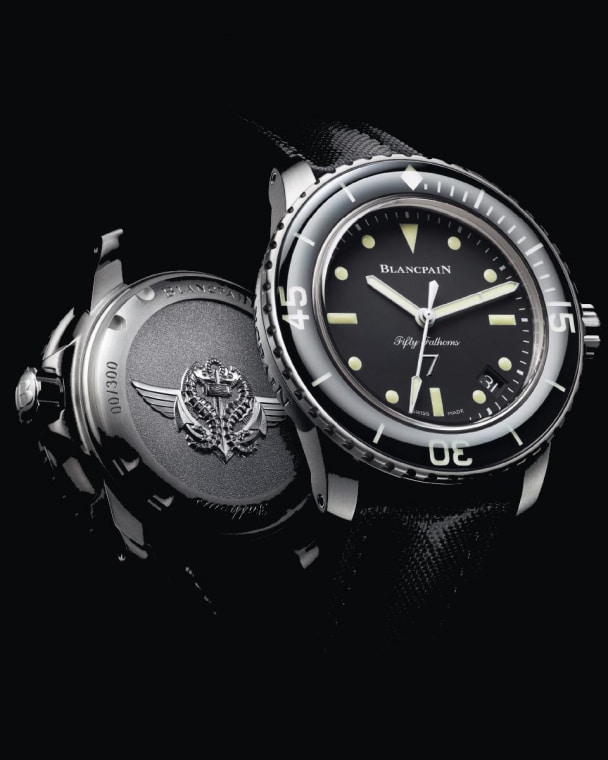
The limited edition Nageurs de Combat honors the SHARED HISTORY between Blancpain and the French combat divers.
The French combat diving corps exists still today, as do warm relations with Blancpain. During one of several casual meetings in the South of France, the idea was hatched to pay homage to the now 70-year history with a watch commemorating the 1953 adoption of the Fifty Fathoms by the original team assembled by Maloubier and Riffaud. There were two special requests from the combat divers made to mark this special memorial edition. The first was to place the number “7” on the dial. Today, a diver’s tank is filled with compressed air. In the early days of scuba diving, tanks were filled with pure oxygen. Relatively soon it was discovered that oxygen posed a grave danger during prolonged dives more than seven meters under the surface. Beyond that depth, an oxygen breathing system would supply greater quantities than could be safely absorbed by the body, possibly leading to central nervous system oxygen toxicity, known as CNS toxicity. In turn, CNS toxicity could cause a diver to suffer convulsions which could be fatal. Thus, although greater depths could be briefly explored, seven meters came to be seen as a de facto maximum. The second request was to place the symbol of the combat diving corps upon the caseback.
What was born was a special edition of the Fifty Fathoms, limited to 300 pieces, named Nageurs de Combat (combat divers) in honor of this shared history between the French Navy and Blancpain. It incorporates both of the special requests. The number “7” in the color black is discreetly embossed on the black dial, serving as a subtle reminder of the limit for diving with pure oxygen, and is seen only when the watch is tilted to catch the light. The combat diver emblem is set in relief upon the recessed center of the caseback surrounded by a grained texture evoking sand. The exterior ring of the caseback and the remainder of the 45 mm stainless steel case have been given a satin finish.
The movement is the caliber 1315 which was specially developed for the modern Fifty Fathoms. Its calling cards are high performance and robustness. Architected with three mainspring barrels, the automatic winding 1315 achieves a power reserve of five days. Its balance is fitted with a silicon hairspring and features inertial regulation with gold screws offering superior resistance to shocks. Since the silicon hairspring is a-magnetic, there is no need to include a soft-iron inner case to protect against magnetism.
In common with other Fifty Fathoms, the unidirectional bezel is fashioned in scratch-resistant sapphire. Its black background color and white luminous markings applied on its lower surface combine with a bombé shape to bring extraordinary visual depth to the presentation. Blancpain’s signature sail cloth rubber-lined strap completes the ensemble.
The dial indexes and hands are unique to this limited series and give this celebratory timepiece a distinctly vintage vibe.
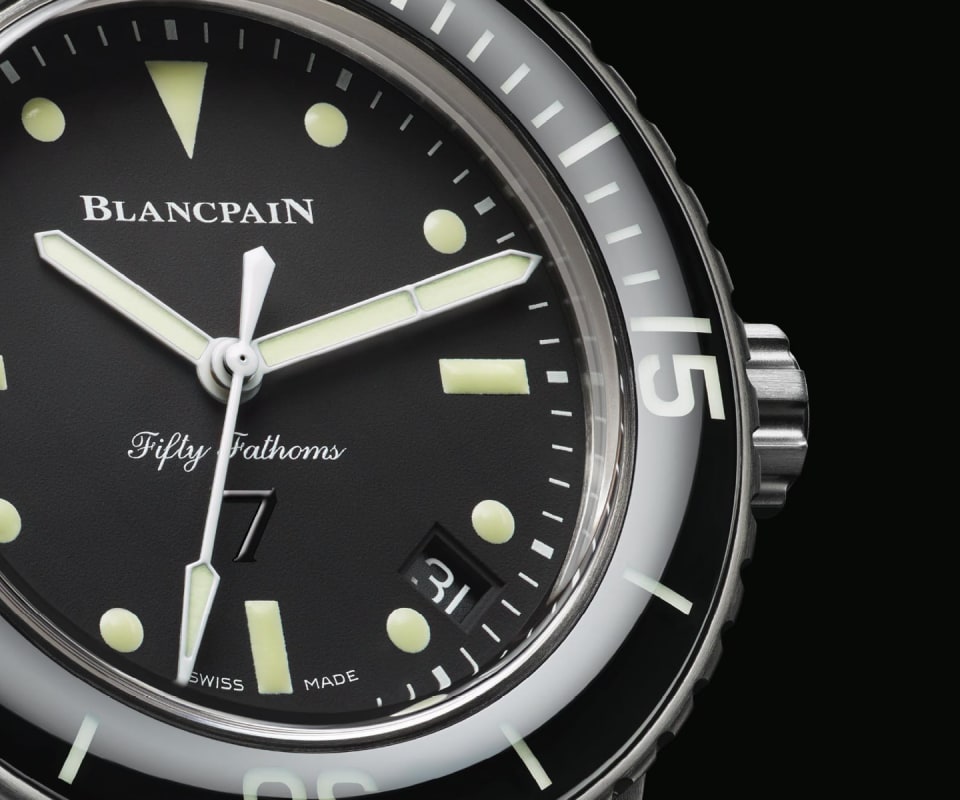
The Nageurs de Combat watch. The number “7” indicates the maximum safe diving depth if pure oxygen is used. As diving evolved, pure oxygen ceased being used in favor of air.
Other issues
Don't miss the latest issue
Sign Up for New Releases

